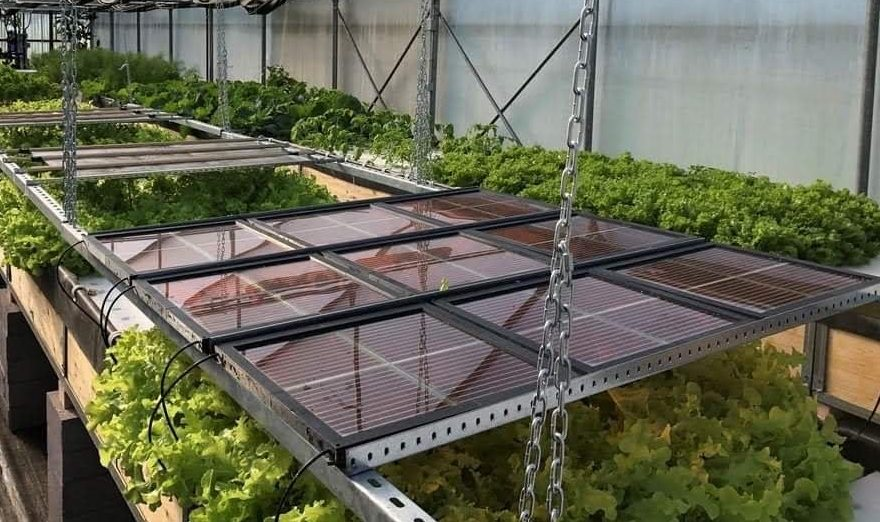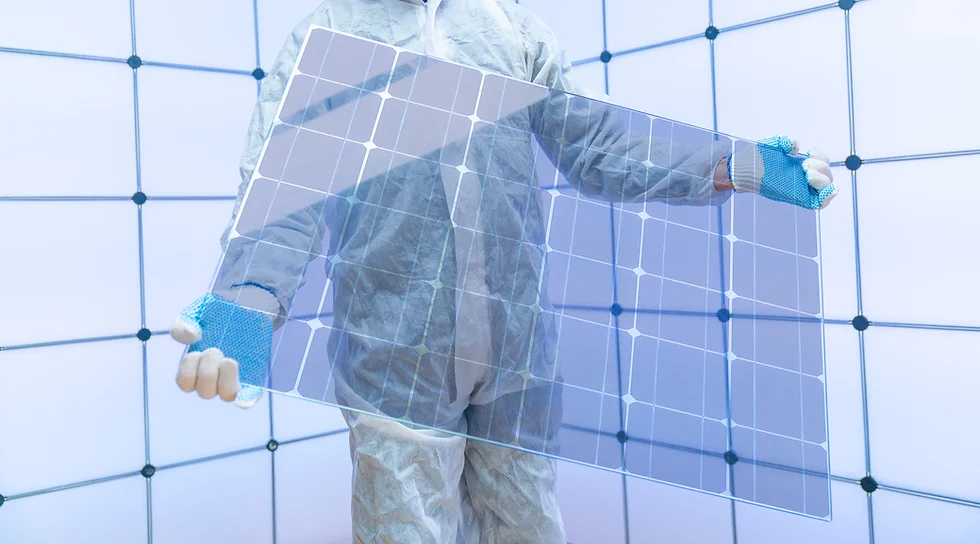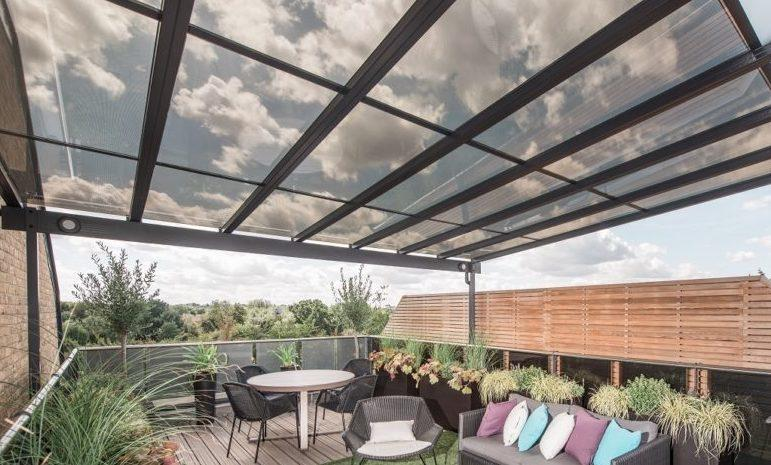Invisible Power: How Transparent Solar Panels Are Revolutionizing Green Energy
Renewable energy technology is gradually assuming new forms with the emergence of transparent solar panels. These solar panels as their name suggest are either transparent or semi-transparent since they allow light to pass through them. It is for this reason that they offer alternative uses which opaque traditional panels cannot provide. In this article, we will cover how they work, their pros and cons, efficiency, cost, applications, and how they compare to traditional solar panels. We will also address some frequently asked questions about this new technology.
What is a transparent solar panel
The transparent solar panel is a type of solar panel that allows light to pass through it. It is designed using transparent organic materials rather than opaque silicon semiconductors used in conventional solar panels. Transparent solar panels can be either partially transparent where some light passes through, or fully transparent where maximum light transmission occurs.
Partially transparent solar panels
There are partially transparent solar panels that allow light to pass through while at the same time using the rest to generate electricity. They are somewhat transparent but not completely, rather they have a semi-translucent appearance.
These panels are created employing layers of transparent conducting oxide and thin crystalline silicon cells. The silicon cells are tiny and are closely packed with small spaces in between through which light passes.

Fully transparent solar panels
Fully transparent solar panels allow maximum light transmission to achieve complete transparency. They are made using organic materials like conductive polymers, dyes, and other carbon-based compounds.
As these materials can be microscopically thin, light can shine through the panel without being obstructed. Fully transparent panels may absorb only 10-20% of incoming light while transmitting the remaining 80-90%.
This high transparency makes the panel appear like normal glass. But the absorbed light gets converted to electricity by the underlying organic semiconductors.

How do transparent solar panels work
You might be wondering how do transparent solar panels work? Transparent solar panels work on the basis of conventional solar panels by absorbing photons from sunlight and converting them into electricity. However, instead of silicon cells used in this conventional type, they utilize transparent organic materials.
Organic photovoltaics consists of layers of organic semiconductors that are sandwiched between transparent conductors such as indium tin oxide. Photovoltaic effects in these organic compounds make them generate electricity when exposed to the sun rays.
The influence of sunlight on it causes the photons to be absorbed at the organic semiconductor layers. The energized electrons shift through the semiconductor layer and then between its metallic plates, consequently creating an electric current flow.
The transparency is controlled by regulating the thickness of the organic layers, where thinner ones pass more light while thicker ones absorb more light. Thus both electricity generation and light transmittance can be achieved by optimizing layer thickness.
How much do transparent solar panels cost?
At present, transparent solar panels are costlier than their counterparts made from traditional silicon. The exact price depends upon the type and degree of transparency involved. Generally speaking, semi-transparent solar cells cost anywhere from $300 to $400 per square meter; whereas fully-transparent panels range between $500-600 per square meter.
The reason why transparent panels are more expensive is due to their complex fabrication process that uses costly organic materials for instance those with high optical absorption coefficient (α). Manufacture of defect-free highly efficient and transparent thin films out of organics requires sophisticated equipment and precise techniques resulting into increased production expenses.
But as technology matures further and economies-of-scale emerge costs will drop. Manufacturers are actively investigating approaches to boost efficiency whilst decreasing material and processing costs so that affordable transparency might be approached for in future years.
Pros and cons of transparent solar panels
Pros
- Allow light transmission – Unique capability that silicon panels lack. Enables solar power generation from see-through surfaces.
- Aesthetic appeal – Integrate seamlessly into buildings, solar cell windows, cars etc without affecting visibility or aesthetics.
- Lightweight – Organic materials make transparent panels thinner, lighter and more flexible than traditional glass and silicon panels. Easy to install.
- Versatility – Can be customized for varying transparency needs, from fully clear to semi-transparent.
- Energy generation – Despite transparency, they still generate electricity from absorbed sunlight.
Cons
- Expensive – Currently costs more than silicon panels due to complex manufacturing and organic materials.
- Lower efficiency – Average efficiency is around 5-8% compared to 15-20% of silicon panels. Generates less power per square meter.
- Stability issues – Organic compounds are less stable long-term. Performance may degrade faster than silicon cells.
- Susceptible to damage – Vulnerable to cracks, scratches etc as layers are microscopically thin. Lower durability than glass panels.
How efficient are transparent solar panels?
Transparent solar panels are less efficient than the normal silicon ones. In comparison, they work at about 5-8% efficiency as compared to silicon which works at around 15-20%.
This discrepancy arises from the fact that transparent organic semiconductor materials do not absorb sunlight as well and thus convert it into electricity less effectively than silicon does. Their molecular structure and electronic properties are optimized for transparency rather than maximizing light absorption. Moreover, the thin organic layers capture a smaller fraction of incoming light as most of it passes through the panel. Thicker layers could improve light absorption but would compromise on transparency. However, researchers are working on developing novel organic compounds and nano-scale geometries to improve the efficiency of transparent panels. With innovations in materials and device engineering, double-digit efficiencies of around 10-15% should be possible in the near future.
Applications of transparent solar panels

The unique transparency and lightweight nature of these panels open up many exciting applications not feasible with conventional solar panels.
Some examples include:
- Window glazing – Install on building and vehicle windows to generate power while retaining visibility.
- Glass facades – Integrate with glass walls, atriums, skylights and curtain walls on buildings.
- Greenhouses – Transparent panels can cover greenhouses to produce electricity while letting in sunlight for the plants.
- Displays – Use as overlays on LCD/LED displays, billboards, signs and electronic devices to power the display.
- Automobiles – Integrate into sunroofs, window glass and sun visors of vehicles to produce auxiliary power.
- Consumer devices – Use as charging displays for phones, watches and other portable gadgets.
- Spacecraft – Thin, lightweight panels are ideal for spacecraft where weight is critical.
Transparent solar panels vs traditional solar panels
Here is a comparison between transparent solar panels and conventional silicon solar panels:
Conclusion
Transparent solar panels are a remarkable innovation of solar technology that addresses the constraints imposed on conventional panels. As things stand, they are more costly and not as productive although continued investigation into enhancing organic semiconductors is expected to boost their efficiency and competitiveness in terms of cost. The availability of clear energy producing surfaces enables transparent solar PV to access other uses that cannot be supported by the opaque ones. Given its huge potential, transparent solar PV will supplement silicon panels and increase the pace at which the global solar revolution is taking place.
FAQ
1.How much transparency can these panels achieve?
Fully transparent panels can transmit around 80-90% of incoming light to appear like normal glass. Partially transparent ones allow about 50% light through. The level of transparency depends on the thickness and type of organic layers used.
2.Can they be installed anywhere like windows?
Yes, the transparency and flexibility of these panels allows them to be installed on irregular transparent surfaces like building glass facades, skylights, pergolas etc.
3.How long do transparent panels last?
Durability is lower than silicon cells. But new encapsulation methods and materials engineering is improving lifespan to around 10-15 years. Proper sealing from moisture and oxygen can enhance longevity.
4.Do they work equally well in low light conditions?
No, their efficiency drops more sharply than silicon panels under low light like cloudy conditions or dawn/dusk. They work best in bright sunlight.











